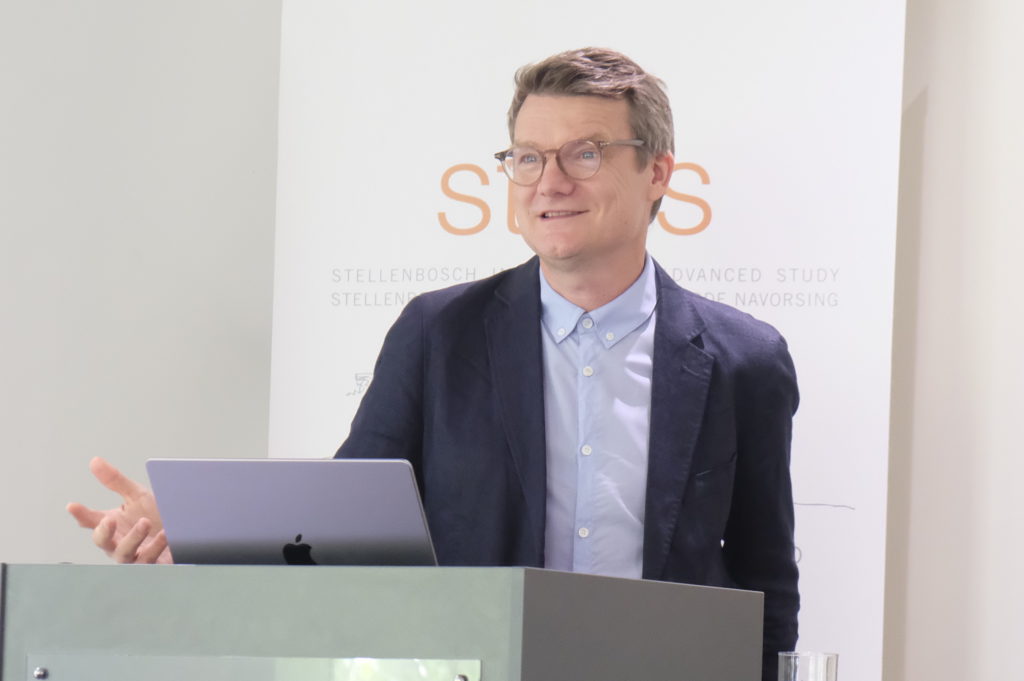Attempting to improve spinal cord repair
Spinal cord injuries usually lead to the persistent loss of body functions below the site of injury. These injuries disproportionately affect young adults with devastating consequences for their physical, mental, social and professional life, and place a large financial burden on societies and families. Most spinal cord injuries are chronic with no available treatments currently. In Africa, in particular, most traumatic spinal cord injuries are caused by motor vehicle accidents, falls and violence but there is limited data from sub-Saharan countries.

An important reason why the functional deficit becomes permanent is the presence of scar tissue, which blocks regeneration of the connections between neurons.
“I’m interested in understanding the cellular and molecular mechanisms of scarring in the central nervous system with the aim to facilitate regeneration,” said Christian Göritz of the Department of Cell and Molecular Biology at the Karolinska Institutet, Sweden.
In his seminar, he explored questions around the origin and function of scar tissue and how the fibrotic scar component influences axonal regeneration and functional recovery after spinal cord injury.
He started off by explaining in simple terms the basis of nerve cell function, as a change of membrane potential in response to opening/closing of ion channels. This principal forms the basis for all neural communication, nerve conduction and muscle contraction. Neurons in the ear, nose, eyes and skin register stimuli from the external environment which are translated into micro-electric signals and transmitted via the neuronal network to the brain.
“The spinal cord connects our body to the brain. Sensory information is sent up to the brain while motor functions are controlled by the brain via the spinal cord. Injury can disrupt these motor and sensory pathways, leading to a loss of body functions.”
The hope that regeneration can be achieved comes from the observation that some severed nerve fibres show regrowth after injury. But unfortunately, they stop at the scar. It is therefore important to understand exactly what happens in the war zone – the site of a traumatic injury – and which cells and how form a scar.
Too much of a good thing
By tracking cells in the living organism, Dr Göritz’s research group has shown that a specific subpopulation of cells surrounding blood vessels are the main source of scar tissue following spinal cord injury.
“Fibrotic scarring by perivascular cells is essential for regaining tissue integrity,” explained Dr Göritz. “This process is part of the wound closure programme and without it a hole would be left. However, after the wound is closed the fibrotic cells stay on and form long-term persistent fibrotic scar tissue. We need to find a way to close wounds and regenerate tissue without too much and persistent scar formation.”
“We don’t know why the body responds by forming permanent scar tissue,” he continued. “There are species that can completely regenerate body parts. Humans do not have this ability. A scar is like a roadblock, limiting regeneration.”
Dr Göritz’s research group has shown in mouse models that attenuation of the pericyte-derived scarring can lead to improved regeneration of nerve fibres and some functional recovery.
“By analysing tissue from deceased patients, we found similar perivascular cells and could show that fibrotic scar tissue is formed in response to spinal cord injury in humans, similar to our mouse models,” said Dr Göritz. “We therefore believe that modulation of fibrotic scarring represents a therapeutic target to treat spinal cord injury.”
His findings extend beyond traumatic spinal injury. By comparing different injury and disease models, his team could show that fibrotic scarring caused by the same perivascular cells also occurs after multiple sclerosis, traumatic brain injury and stroke.
“We could show that fibrotic scarring by the same perivascular cells is conserved across the central nervous system,” he said.
Shedding light on brain activity
To stimulate discussion, Dr Göritz pointed to one of his early inspirations as the 1999 movie The Matrix – which centres around a human-machine interface that allows control of the human mind and a computerised simulation of real life. “It made me wonder could this be possible at all?”
In this regard, he elaborated on a technique called optogenetics, which allows control of nerve cells activity with light pulses via the expression of light-sensitive ion channels. His group has used this technique to test the function of regenerated nerve fibres. He described it as “switching neurons on and off with light”.
The final goal of Dr Göritz’s research is to find a treatment for spinal cord injury, but he stressed that it will take a long time to reach there with many challenges and decisions to be made along the way. In discussion, he addressed the ethics of animal studies as well as the overall ethical challenges in this work.
“Animal models allow us to understand comprehensive disease mechanisms that can’t be modelled in any other way. They are highly regulated. The reality is that if you decided not to take any medical treatment that has been tested in animals, you would in many cases not receive any medication. However, there is an ongoing need to carefully weigh risks and benefits.”
“It is important to reach consensus in society about the risks and benefits of new discoveries and inventions. However, it is difficult to predict the outcome of basic science as we don’t know the implications beforehand. Research is driven by curiosity and not knowing the outcome, making it hard to know exactly when to bring other disciplines into the process.”
Michelle Galloway: Part-time media officer at STIAS
Photograph: Noloyiso Mtembu
